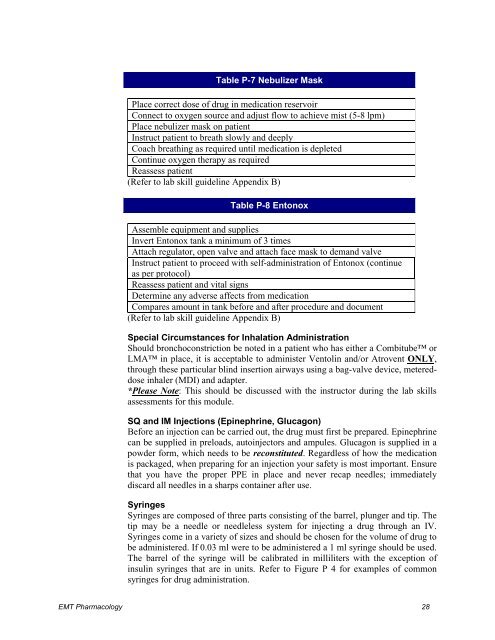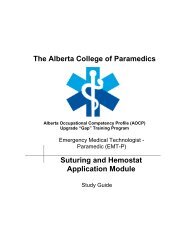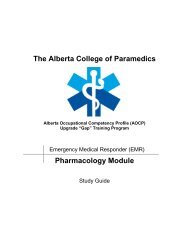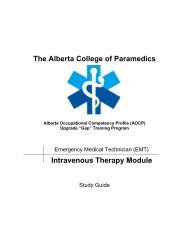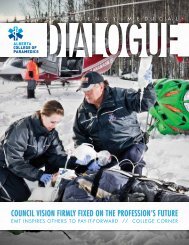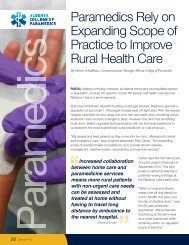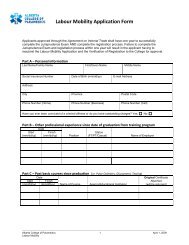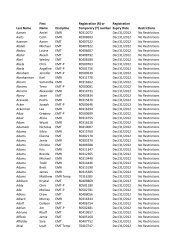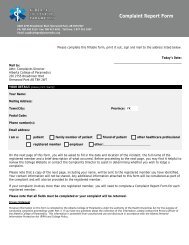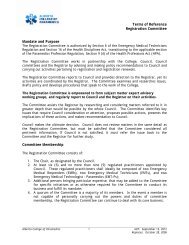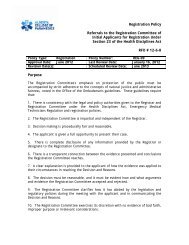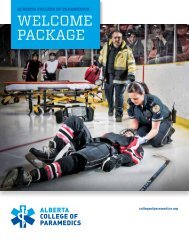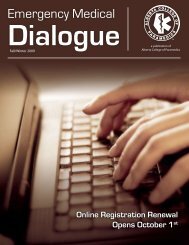Pharmacology - Alberta College of Paramedics
Pharmacology - Alberta College of Paramedics
Pharmacology - Alberta College of Paramedics
You also want an ePaper? Increase the reach of your titles
YUMPU automatically turns print PDFs into web optimized ePapers that Google loves.
Table P-7 Nebulizer MaskPlace correct dose <strong>of</strong> drug in medication reservoirConnect to oxygen source and adjust flow to achieve mist (5-8 lpm)Place nebulizer mask on patientInstruct patient to breath slowly and deeplyCoach breathing as required until medication is depletedContinue oxygen therapy as requiredReassess patient(Refer to lab skill guideline Appendix B)Table P-8 EntonoxAssemble equipment and suppliesInvert Entonox tank a minimum <strong>of</strong> 3 timesAttach regulator, open valve and attach face mask to demand valveInstruct patient to proceed with self-administration <strong>of</strong> Entonox (continueas per protocol)Reassess patient and vital signsDetermine any adverse affects from medicationCompares amount in tank before and after procedure and document(Refer to lab skill guideline Appendix B)Special Circumstances for Inhalation AdministrationShould bronchoconstriction be noted in a patient who has either a Combitube orLMA in place, it is acceptable to administer Ventolin and/or Atrovent ONLY,through these particular blind insertion airways using a bag-valve device, metereddoseinhaler (MDI) and adapter.*Please Note: This should be discussed with the instructor during the lab skillsassessments for this module.SQ and IM Injections (Epinephrine, Glucagon)Before an injection can be carried out, the drug must first be prepared. Epinephrinecan be supplied in preloads, autoinjectors and ampules. Glucagon is supplied in apowder form, which needs to be reconstituted. Regardless <strong>of</strong> how the medicationis packaged, when preparing for an injection your safety is most important. Ensurethat you have the proper PPE in place and never recap needles; immediatelydiscard all needles in a sharps container after use.SyringesSyringes are composed <strong>of</strong> three parts consisting <strong>of</strong> the barrel, plunger and tip. Thetip may be a needle or needleless system for injecting a drug through an IV.Syringes come in a variety <strong>of</strong> sizes and should be chosen for the volume <strong>of</strong> drug tobe administered. If 0.03 ml were to be administered a 1 ml syringe should be used.The barrel <strong>of</strong> the syringe will be calibrated in milliliters with the exception <strong>of</strong>insulin syringes that are in units. Refer to Figure P 4 for examples <strong>of</strong> commonsyringes for drug administration.EMT <strong>Pharmacology</strong> 28


